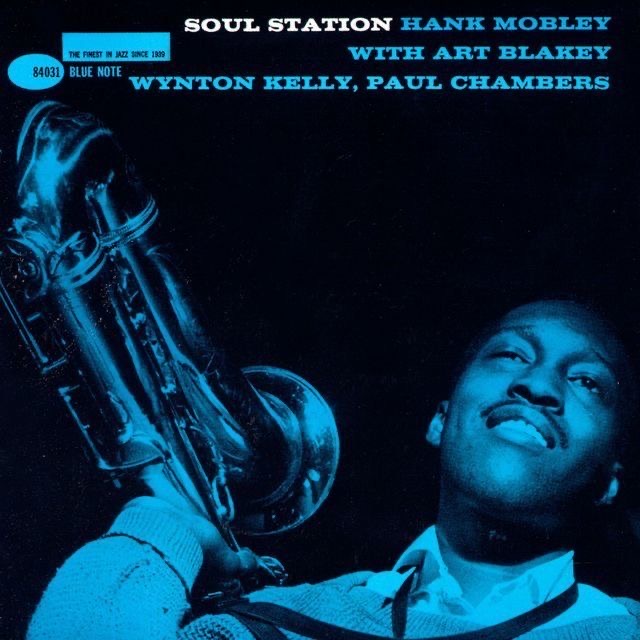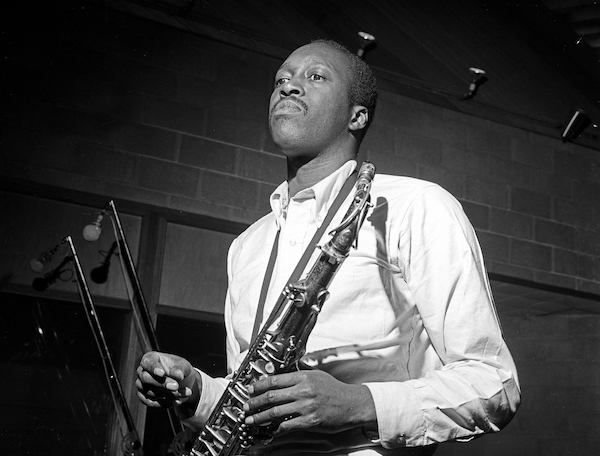Dive into the Power & Passion of ‘Tenor Madness
In the vast panorama of jazz, Sonny Rollins’ “Tenor…
As I delve into the enchanting world of jazz, I find myself inevitably drawn to the 1960 classic, “Soul Station” by the inimitable Hank Mobley. Released under the prestigious Blue Note label, this hard bop gem showcases Mobley’s distinctive style and profound musicianship.

On February 7, 1960, Mobley, alongside his talented cohorts – Wynton Kelly on piano, Paul Chambers on bass, and Art Blakey on drums – stepped into the legendary Van Gelder Studio in Englewood Cliffs, New Jersey. Under the watchful eye of producer Alfred Lion, the quartet produced an album that would leave an indelible mark on the jazz landscape.
The tenor saxophonist Hank Mobley was already an established jazz musician when he recorded Soul Station. He played with the likes of Art Blakey and Max Roach, developing his unique rhythmic sense and style. Wynton Kelly, the pianist on the album, was a highly sought-after musician, having worked with prominent artists such as Dizzy Gillespie, John Coltrane, and Miles Davis.

Paul Chambers, the bassist, was a key member of Miles Davis’ group, and had played alongside jazz legends like Thelonious Monk and Sonny Rollins. Art Blakey, the drummer, was not only a skilled musician but also a bandleader known for his work with the Jazz Messengers. His experience and skill contributed significantly to the success of Soul Station.
“Remember” is a charming rendition of the Irving Berlin classic, with Mobley’s tenor saxophone taking center stage. Kelly’s piano accompaniment adds depth and texture to the track, while Chambers’ bass and Blakey’s drums provide a solid foundation. Mobley’s melodic prowess is evident throughout the song, as he breathes new life into the familiar tune with his soulful improvisations.

“This I Dig of You,” an original composition by Mobley, is a testament to his talent as both a composer and a performer. The catchy melody and swinging rhythm showcase the exceptional interplay between the musicians, particularly during Kelly’s captivating piano solo and Blakey’s dynamic drumming. Mobley’s soulful saxophone playing weaves in and out of the rhythm section, creating a tapestry of sound that remains utterly mesmerizing.
A personal favorite, “Split Feelin’s,” stands out for its engaging melody and the incredible chemistry between the musicians. Mobley’s saxophone playing is both soulful and expressive, while the rhythm section of Kelly, Chambers, and Blakey provides a perfect backdrop for his improvisations. As the song unfolds, Mobley explores the full range of his instrument, painting a rich sonic landscape that leaves the listener captivated.

Soul Station’s hard bop style is characterized by its marriage of bebop and blues, combining dance-like rhythms with light, flowing melodies. The themes explored in the album include the importance of rhythm and dance in jazz, the development of individual style, and the significance of collaboration between musicians. Mobley’s compositions and playing, along with the contributions of Kelly, Chambers, and Blakey, make for an album that is both cohesive and captivating.
Upon its release, Soul Station garnered positive reviews for its musicianship and unique sound. The album quickly gained recognition as a significant jazz recording, and its impact on the jazz world was undeniable. Soul Station’s enduring influence on subsequent generations of jazz musicians and the continued appreciation for Mobley’s work attest to its timeless appeal.
Today, Soul Station is regarded as a classic jazz album and a testament to Mobley’s exceptional talent. It remains a popular and influential recording within the jazz community, and its continued significance can be attributed to its timeless appeal, the superb performances by all four musicians, and the unique blend of hard bop and dance-like rhythms that define its sound. As new listeners discover this gem, its legacy is only further cemented within the annals of jazz history.
In an era where the likes of John Coltrane and Sonny Rollins often grab the spotlight, Hank Mobley’s Soul Station is a gentle reminder that there were other tenor saxophone giants worth exploring. Mobley’s approach to his instrument and his ability to craft engaging compositions make him a vital figure in the jazz narrative.
The album’s impact is not only limited to the jazz community but extends to musicians and listeners alike who appreciate the intricate interplay and the soulful grooves that the album exudes. The effortless collaboration between Mobley, Kelly, Chambers, and Blakey demonstrates the importance of musical synergy and the ability to communicate through the universal language of jazz.
As time progresses, Soul Station’s continued relevance is a testament to its timeless nature. The album serves as an essential entry point for those new to jazz, as well as a beloved classic for seasoned listeners. The album’s influence can be heard in the works of contemporary jazz artists who continue to draw inspiration from the rich tapestry of sound that Mobley and his cohorts wove together.
In conclusion, Hank Mobley’s Soul Station is a shining beacon in the realm of jazz, an album that transcends its era and continues to captivate listeners with its perfect blend of virtuosity and soulfulness. The performances by Mobley, Kelly, Chambers, and Blakey form a synergistic masterpiece that will forever hold a special place in the hearts of jazz enthusiasts. As I continue my journey through the world of jazz, Soul Station will undoubtedly remain a touchstone, a reminder of the power and beauty that can be achieved through the collaborative spirit of exceptional musicians.